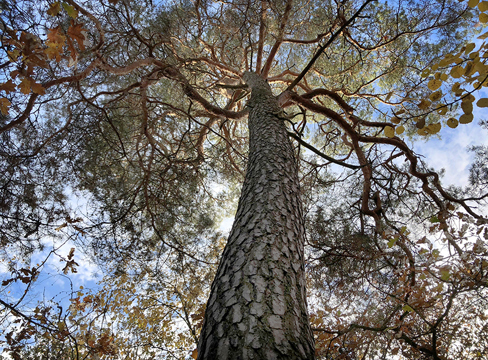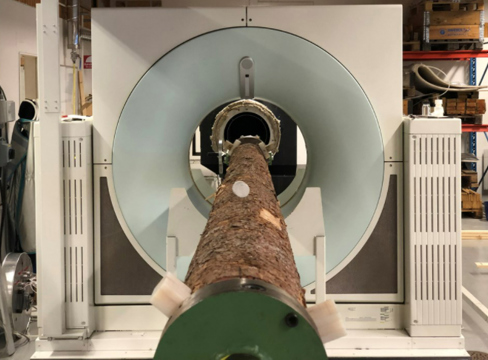Biodiversity and our responsibility
Climate change presents us with major challenges and it is essential to protect biodiversity. What are Sweden’s forest owners doing and how can biodiversity be measured?
Sweden’s Red List assesses and summarises the risk of individual species dying out in Sweden, and provides an overview of their status.
The list can provide support when deciding on nature conservation priorities and is an important source of knowledge in the drive to achieve set environmental goals.
There is nothing to suggest that the forests have become less species-rich in recent centuries, but there is also no evidence of an increase in diversity. The Swedish bird survey does, however, indicate an increase in birdlife in the forest. We also know that many of the habitats that are crucial for biodiversity have seen an increase, with more ancient forest, large trees, broadleaf trees and deadwood.
Since the 1950s, no species has disappeared from Sweden solely as a result of forestry. According to the Swedish Species Information Centre’s Red List, harvesting “may have been a contributory factor” in the disappearance of five species in modern times, but there are also many other reasons behind these species losses.
The Forestry Act of 1993 puts environmental and production goals on the same footing. Achieving environmental goals and securing production goals are thus of equal importance. This is a responsibility to which all forest owners contribute.
The Swedish Species Information Centre and the Swedish Taxonomy Initiative at the Swedish University of Agricultural Sciences (SLU) provide much of the nation’s official statistics.
Forest owners’ responsibility
Responsibility for biodiversity in the forest is shared between the state and the forest owners.
The state preserves forests through nature reserves, habitat protection areas, nature conservation agreements and national parks. Forest owners discharge their responsibility by showing environmental consideration in their silviculture measures and, for example, voluntarily setting aside land for nature conservation.
How much of Sweden’s forest land is not managed?
Sweden has 28 million hectares of forest land, but not all of it is used for forestry purposes. All sorts of percentages appear in the public debate about how much forest land is protected or exempt from harvesting.
Let us explain the different categories:
- Formally protected forest
Sweden has 30 national parks, over 5,200 nature reserves, over 8,400 habitat protection areas and 5,400 nature conservation agreements. Formally protected forest totalled 2.4 million hectares as at the end of 2020, according to Statistics Sweden (SCB). This corresponds to 9 percent of Sweden’s forest land. Of this, a little over 1.3 million hectares relate to productive forest, representing almost 6 percent of the nation’s productive forest land. - Voluntary set-asides
Forest owners who are certified under one or both of the certification schemes FSC and PEFC refrain from working at least 5 percent of the productive forest land on their property. Often, forest owners who are not certified also choose to keep some areas free from forestry activities. Sweden’s voluntary set-asides currently total a little over 1.3 million hectares of productive forest land. - Non-productive forest land
Non-productive forest land is forest on poor soil where total tree growth falls below one cubic metre per hectare per year. Non-productive forest land covers a total of 3.1 million hectares, or 11 percent of Sweden’s forest land, according to the SCB.
How are the calculations done?
If you want to work out the amount of Sweden’s productive forest land that is formally protected, the figure is 6 percent. But if you instead calculate how much of the total forest land is exempt from forestry activity, the figure is around 25 percent.
Sweden has a very strict definition of what can be considered protected. Most EU countries claim that they protect at least 20 percent, some even more. However, this protection can often include allowances for agriculture and forestry – which is not the case in Sweden.



